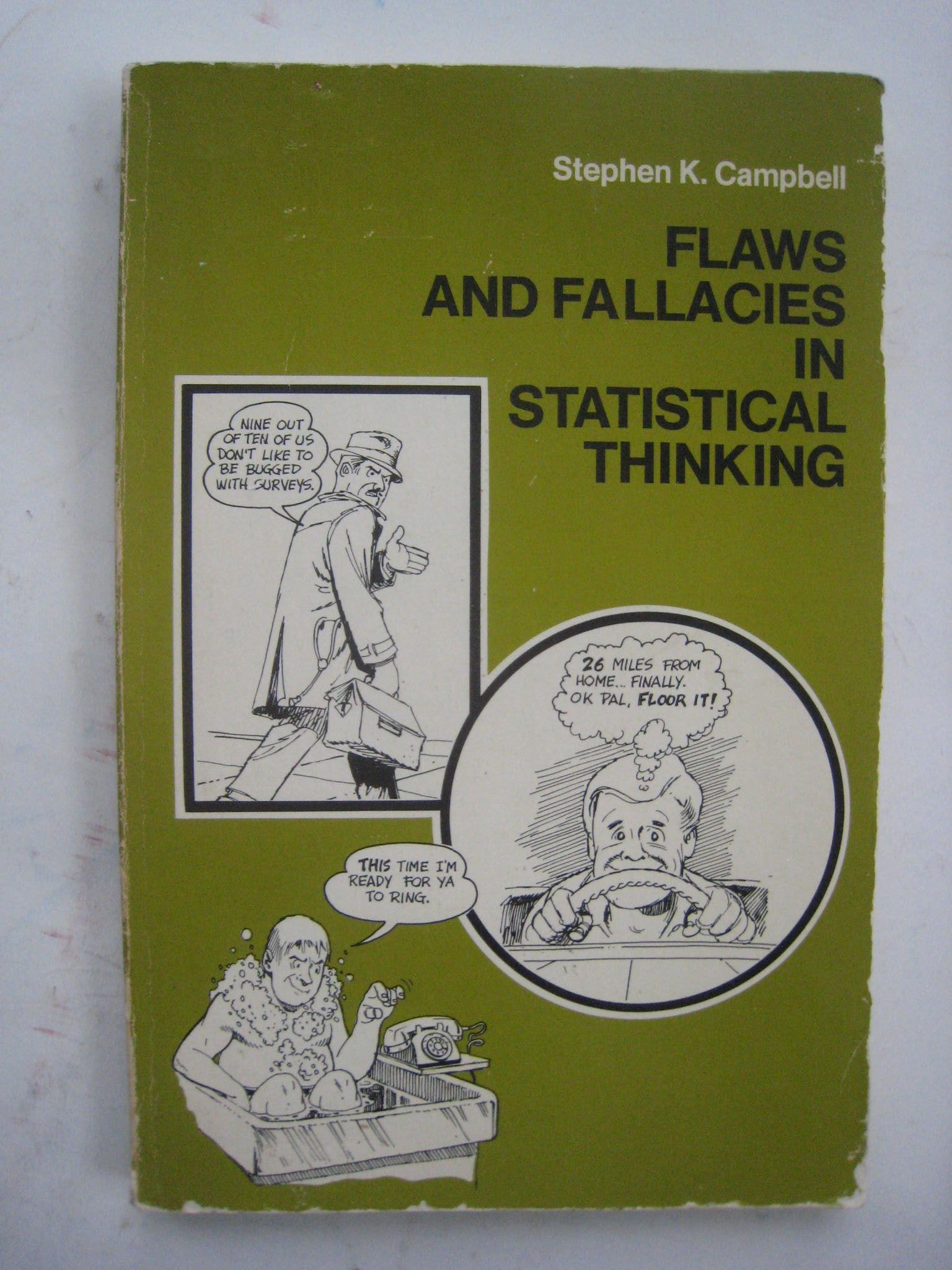
Title

Flaws And Fallacies In Statistical Thinking (Dover Books On Mathematics)
Delivery time: 8-12 business days (International)
This Book Was Written With A Dual Purpose: First, The Author Was Motivated To Relieve His Distress Over The Faulty Conclusions Drawn From The Frequent Misuse Of Relatively Simple Statistical Tools Such As Percents, Graphs, And Averages. Second, His Objective Was To Create A Nontechnical Book That Would Help People Make Betterinformed Decisions By Increasing Their Ability To Judge The Quality Of Statistical Evidence. This Volume Achieves Both, Serving As A Supplemental Text For Students Taking Their First Course In Statistics, And As A Selfhelp Guide For Anyone Wishing To Evaluate Statistical Evidence More Judiciously.The Sequence Of Topics Corresponds With That Of Many Beginning Textbooks In Statistics, And The Terminology And Treatment Of Subjects Are Based On The Assumption That Readers Have Had Little Or No Prior Exposure To Statistics Or Formal Mathematics. The Author Examines The Perils Of Statistical Ignorance, Some Problems In Basic Measurement And Definition, And The Prevalence Of Meaningless Statistics, Farfetched Estimates, Cheating Charts, And Accommodating Averages. He Explains Common Pitfalls Of Statistical Thinking Such As Ignoring Dispersion, Inflating Percentages, Drawing Improper Comparisons, Jumping To Conclusions, And Making Errors Of Probability And Induction. Playful In Tone But Scrupulously Accurate In Nature, This Text Is Equally Valuable In And Out Of The Classroom.
By changing our most important processes and
products, we have already made a big leap forward. This ranges from the
increased use of more sustainable fibers to the use of more
environmentally friendly printing processes to the development of
efficient waste management in our value chain.
⚠️ WARNING (California Proposition 65):
This product may contain chemicals known to the State of California to cause cancer, birth defects, or other reproductive harm.
For more information, please visit www.P65Warnings.ca.gov.
Shipping & Returns
Shipping
We ship your order within 2–3 business days for USA deliveries and 5–8 business days for international shipments. Once your package has been dispatched from our warehouse, you'll receive an email confirmation with a tracking number, allowing you to track the status of your delivery.
Returns
To facilitate a smooth return process, a Return Authorization (RA) Number is required for all returns. Returns without a valid RA number will be declined and may incur additional fees. You can request an RA number within 15 days of the original delivery date. For more details, please refer to our Return & Refund Policy page.
Shipping & Returns
Shipping
We ship your order within 2–3 business days for USA deliveries and 5–8 business days for international shipments. Once your package has been dispatched from our warehouse, you'll receive an email confirmation with a tracking number, allowing you to track the status of your delivery.
Returns
To facilitate a smooth return process, a Return Authorization (RA) Number is required for all returns. Returns without a valid RA number will be declined and may incur additional fees. You can request an RA number within 15 days of the original delivery date. For more details, please refer to our Return & Refund Policy page.
Warranty
We provide a 2-year limited warranty, from the date of purchase for all our products.
If you believe you have received a defective product, or are experiencing any problems with your product, please contact us.
This warranty strictly does not cover damages that arose from negligence, misuse, wear and tear, or not in accordance with product instructions (dropping the product, etc.).
Warranty
We provide a 2-year limited warranty, from the date of purchase for all our products.
If you believe you have received a defective product, or are experiencing any problems with your product, please contact us.
This warranty strictly does not cover damages that arose from negligence, misuse, wear and tear, or not in accordance with product instructions (dropping the product, etc.).
Secure Payment
Your payment information is processed securely. We do not store credit card details nor have access to your credit card information.
We accept payments with :
Visa, MasterCard, American Express, Paypal, Shopify Payments, Shop Pay and more.
Secure Payment
Your payment information is processed securely. We do not store credit card details nor have access to your credit card information.
We accept payments with :
Visa, MasterCard, American Express, Paypal, Shopify Payments, Shop Pay and more.
Related Products
You may also like
Frequently Asked Questions
- Q: What is the main purpose of 'Flaws and Fallacies in Statistical Thinking'? A: The book aims to help readers understand common misuses of statistical tools and improve their ability to evaluate statistical evidence, making it accessible for both students and general readers.
- Q: Who is the author of the book? A: The author of 'Flaws and Fallacies in Statistical Thinking' is Stephen K. Campbell.
- Q: What type of binding does this book have? A: This book is available in paperback binding.
- Q: How many pages does the book have? A: The book consists of 208 pages.
- Q: When was 'Flaws and Fallacies in Statistical Thinking' published? A: The book was published on March 19, 2004.
- Q: Is this book suitable for beginners in statistics? A: Yes, the book is designed for readers with little to no prior exposure to statistics, making it suitable for beginners.
- Q: What topics does the book cover? A: The book discusses statistical ignorance, basic measurement issues, misleading statistics, and common pitfalls in statistical thinking.
- Q: Can this book serve as a textbook? A: Yes, it can serve as a supplemental text for students taking their first course in statistics.
- Q: What is the tone of the writing in the book? A: The writing is playful yet scrupulously accurate, aiming to engage readers while providing reliable information.
- Q: Does the book include practical examples or applications? A: Yes, it examines real-world statistical misapplications, aiding readers in making better-informed decisions.
